Ever notice that nagging shoulder ache seems to usher in a throbbing headache later in the day? You’re not imagining it—shoulder pain and headaches are often connected. At Proactive Health, we get how frustrating this combo can be. Understanding the relationship between your shoulder and your head pain is key to getting relief. Ready to uncover why this happens and how to fix it? Let’s go.
Understanding the Connection Between Shoulder Pain and Headaches
Your shoulder and neck share muscles, nerves, and alignment that can influence each other in surprising ways.
Anatomy overview
The trapezius, levator scapulae, and upper back muscles span from your shoulder blades to your neck and skull base.
If these muscles are tight or injured, they can trigger tension up into your head, contributing to headaches.
The nerve pathway
The cervical spine (C1–C7 vertebrae) sends nerve signals through the shoulder girdle up into the head. Irritation in these areas can trigger nerve-based headaches.
Common Types of Headaches Linked to Shoulder Pain
Three main headache types may relate to shoulder issues:
Tension-type headaches
Often feel like a tight band around your skull. Shoulder-spine muscle tension is a common trigger.
Cervicogenic headaches
These start in your neck or upper spine and radiate toward the head. Shoulder postural imbalances or joint irritation often play a role.
Migraines
While migraines are generally neurological, shoulder tension can act as a trigger or intensify frequency and severity.
Common Causes of Shoulder Pain Leading to Headaches
Here’s what often links shoulder problems and headaches:
1. Poor posture
Desk slouching, forward head tilt, hunched shoulders… These shift load and chronically overwork neck and shoulder muscles, leading to trigger points.
2. Muscle imbalances or overuse
Repetitive lifting, side sleeping habits, or overhead work can cause tight muscles along your shoulder and base of the skull.
3. Joint dysfunction
Stiff cervical joints or rotator cuff issues can cause nearby muscles to overcompensate and pull on nerves that lead to pain.
4. Stress and tension
Emotional stress often shows up physically—in tensed trapezius muscles, neck rigid posture, and increased headache frequency.
Diagnosing the Root Cause
Recognizing what’s behind the pain is the first step.
Self-observation and red flags
Notice if headaches follow days of intense shoulder activity or prolonged desk work. Look out for sharp arm pain, numbness, or visual changes—those warrant immediate attention.
Professional evaluation
At Proactive Health, our approach involves:
- A detailed interview about your activities, posture, and headache pattern.
- Physical tests to check neck and shoulder range of motion and muscle tightness.
- Palpation for muscle trigger points and assessments of joint movement.
- If needed, imaging such as X-rays or MRI to rule out structural issues.
Treatment Strategies for Shoulder-Related Headaches
Once the underlying issue is identified, a targeted plan can reduce both shoulder discomfort and headache frequency.
Home care
- Gentle stretching: Neck tilts, shoulder rolls, levator scapulae stretches ease tightness.
- Posture checks: Use reminders to straighten shoulders and level your head above your spine.
- Heat therapy: A warm towel or heating pad on tense muscles before bed can relax them.
Physical therapy
- Manual therapy: Our hands-on work mobilizes your shoulder blades, spine, and neck joints.
- Trigger point release: We address specific muscle knots that refer pain to your head.
- Strengthening balance: Exercises that reinforce your shoulder stabilizers, scapular muscles, and core improve posture and reduce muscular scarring.
- Cervical stabilization: Targeted exercises help support your neck and quell headache triggers.
Lifestyle adjustments
- Stress management: Techniques like mindfulness, breathing, or mild yoga ease bodily tension.
- Workspace ergonomics: Adjust screen height, chair positioning, and keyboard depth to keep your posture aligned.
- Sleep environment: The right pillow and mattress can support proper neck and shoulder alignment overnight.
Prevention Tips to Keep Headaches Away
Stay ahead of shoulder-related headaches with proactive practices.
Daily movement habits
Periodically stretch your neck and shoulders, roll your shoulders backwards and forwards, and re-engage your core to maintain alignment.
Regular strengthening
Incorporate scapular retractions, rows, and cervical stabilization exercises at least twice a week.
Postural awareness
Check your posture throughout the day—every few hours, ensure shoulders are relaxed and head isn’t jutting forward.
Midday breaks
Short walk-and-stretch pauses during desk days can reset tension.
Ongoing support
Regular check-ins with our Proactive Health therapists help identify early signs and adjust your plan as you progress.
Why Choose Proactive Health?
We’re not just giving exercises—we’re empowering you to connect the dots between your shoulders, neck, and head.
- Personalized plans: We don’t do one-size-fits-all—your treatment is tailored to your unique posture, lifestyle, and goals.
- Hands-on therapy: Our professionals use mobilizations, soft tissue releases, and trigger point treatment to provide real relief.
- Education-driven approach: We show you why tension builds, how to stop it, and how to build habits that last.
- Long-term monitoring: We’re with you for the long haul, helping adjust your approach as your body adapts.
If shoulder tension seems to follow you into migraine territory or daily headaches, don’t wait. Reach out to Proactive Health and schedule a consult. Together, we’ll identify root causes, create a tailored program, and help you find lasting relief so pain doesn’t live in your shoulders—or your head.



